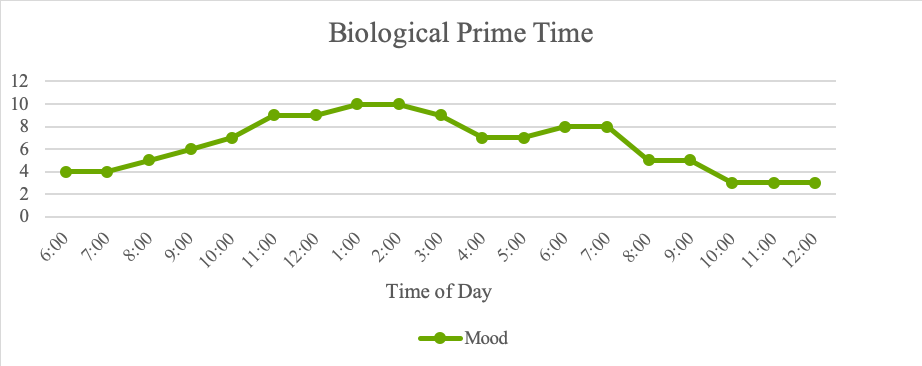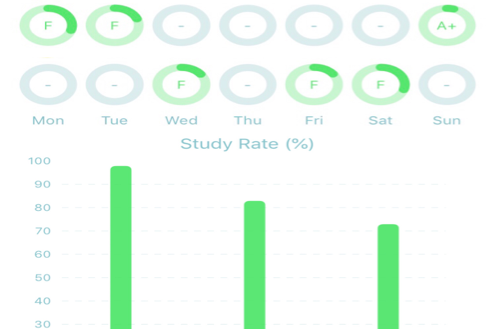Busyness is no different from laziness when it doesn’t lead you to accomplish anything
-Chris Bailey
Where do I even START?
As a second-year student, I have pretty much gotten my study habits down pat. By that I mean I have them down well enough to get everything done by the time it needs to be done. As for actually having a productive and timely manner to get things done and not having to RIP my hair out over how many assignments I have piled up, I may have a problem. When really thinking about what I wanted to fix academically for this project, my time management skills and how productive I am with my time was the first light bulb that went off in my head. My main goal for this project was to put more time and effort into my academics by managing my productivity.
Choosing a great book
Luckily enough for me I knew exactly what I wanted to focus my goal around when picking the book so it was an easy choice. I was solely directing my goal around productivity so what better book to choose than “The Productivity Project” by Chris Bailey. With a bright blue cover that had the statement ‘Accomplishing more by managing your time, attention and energy,’ honestly that quote was my goal just wrapped up into a sentence. And yes, I know what you’re thinking ‘you really based your book off of the cover,’ and the answer is yes and no, the cover really told me what I needed but I did my research on the book and read all of the reviews on it so I ordered it and got to work. I’m so glad I did because this book gave me some great tips to achieve my goal so keep reading to find out more!

Rule of 3
Okay admit it, being able to cross things off of a to do list makes you feel extremely good about yourself, especially when you’re able to cross off EVERYTHING on the list. And then there’s the feeling of discouragement when you’re not able to finish the tasks for that given day. Well there’s a solution for that, Chris Bailey came up with “The Rule of 3” and it’s the best. The whole idea behind this is that in the morning you fast forward to the end of the day and think “what 3 things will I want to have done by then,” and those are your main goals for the day!
By doing this task it really eliminates your mind from wandering to other unimportant tasks that you would otherwise put on your list. Below is a picture of how I tracked my Rule of 3 on my daily to do list. I only wrote 3 main things I needed to get done that day.

Biological Prime Time
Next up on our trip to be a more productive person we have what Chris Bailey likes to call our ‘Biological Prime Time.’ Essentially what he meant by this was that we all have certain times of day in which we have the most energy and focus to get things done. All you need to really do is keep track of your energy. When I came across this section of the book I thought there was no way I would actually be able to figure out what my ‘Prime Time’ is but I did and it has truly help me on my journey to productivity. Now that I know my average most productive times it is so easy for me to get my most dreadful tasks done at those times.

When tracking this strategy, I used a blank sheet of paper to track my energy on a scale of 1 to 10 every hour for 3 weeks straight and then averaged those sheets out to get the above graph showing my most productive times. As you can see my most energetic times were between 11 and 4 so I used that to my advantage and typically did my hardest work at that time, like chemistry lab reports or studying for physiology
DISCONNECTING
Admit it, as you’re reading this you were either previously scrolling through the internet and some random social media site, or you have your phone in your hand at this very second with a social media app open on it. Our lives have become so centered and dependent on social media and technology that sometimes we just need to take even a short break to disconnect. Chris Bailey states in his book that you should take at least 30 minutes a day to disconnect from all technology to just take a break. Although I did do poorly on tracking this method, being able to disconnect for at least 3 out of the 7 days of the week was truly helpful to my productivity.

To the right is how I decided to track the time I spent disconnecting. I used an app called Study Break that shuts down your notifications whiles it’s on and marks how many times you pick up your phone while the timer is running. This is the only habit I had a hard time tracking, I would follow the rules almost every day but I just either forgot to track it or it slipped my mind. I think it would’ve been more beneficial to set a specific time of the day for me to track this time than “just whenever I had time”
TAKEAWAYS
If there is one thing I took away from start to finish of this project it’s that reaching even the simplest of goals requires a lot of time and energy. My main goal at the beginning of this was to spend an hour studying each class every day and although I may not have 100% met or followed that goal, all of these methods have truly helped me get close. As Bailey mention in his book, it’s really not about how much you get done in a day, it’s about getting done what you WANT to get done, that’s what productivity is.
SO, with that being said here’s a list of things I made throughout my journey I’d like to recommend
- DON’T wait until last minute to start a major project, spread it out in gaps
- DON’T let low-impact tasks like reorganizing your desk or cleaning your room get in front of the high impact tasks like an essay or studying for an exam.
- Set aside a day to do all of your low impact tasks so you can have time to let your brain rest
- FIND YOUR MOST PRODUCTIVE TIMES OF DAY!!!!! UTILIZE THAT TIME!!!
Now that I’ve given 3 tips that helped me be more productive, and a GREAT book recommendation, get out there and be productive! Set you goals big or small and feel proud of every small accomplishment you make, it will help you immensely on your tracking to being a better you.
